SUMMARY
This is AI generated summarization, which may have errors. For context, always refer to the full article.

MANILA, Philippines – A small crowd in yellow gathered at the Ninoy Aquino Monument in Ayala Avenue on Sunday, August 20, to celebrate a date that, in the past year has prompted the same question: How does one commemorate the death of a democracy icon when, four decades later, the son of the dictator he stood against is back in power?
“Remembering Ninoy is an act of defiance against fake news and widespread deception. Without memory, all that remains is a hollow democracy,” said Akbayan Party President Rafaela David, for the event that was organized alongside pro-democracy group Tindig Piipinas.
The celebration of the anniversary of Ninoy’s death on August 21 – a holiday across the Philippines – will be considerably bigger.
A People’s Commemoration, spearheaded by the August Twenty-One Movement (ATOM), will be holding a motorcade from the Baclaran Church in Manila to the Sto. Domingo Church in Quezon City, where a mass will be held.
August 21 is the day Benigno “Ninoy” Aquino Jr., one of the staunchest and, often, loneliest political figures who stood up against the dictatorship of Ferdinand Marcos Sr., was gunned down at was then called the Manila International Airport. Aquino had returned to Manila, ignoring the advice of both friends and foes, after years of exile in the United States. Before leaving for the US for medical treatment, Aquino spent years in prison over trumped-up charges under the Marcos dictatorship.
During Aquino’s funeral, held over a week later, over a million Filipinos went out to bid goodbye, according to The New York Times. With Ninoy’s death, the Philippine Daily Inquirer said in a 2013 report, “the unraveling of the Marcos dictatorship” followed.
Just under three years later, in 1986, Marcos Sr. “won” a fraudulent snap election but was later ousted in the People Power Revolution. Cory, Ninoy’s widow who challenged the dictator in the polls, would go on to be president, leading the Philippines in its return to democracy.
Yet, decades later, civic groups and organizations fight to remember the legacy of one Ninoy Aquino. At the helm in Malacañang is Ferdinand Marcos Jr., only son and namesake of the dictator Ninoy and Cory once toppled.
Silence from the Palace
In the hours after Ninoy was gunned down, the Marcos Sr. administration remained silent, “not [confirming] whether Ninoy has been shot or whether he is alive,” according to the Inquirer.
It’s uncanny, then, that in the first August 21 under the Marcos Jr. administration, government agencies – the Palace included – remained silent. The few government accounts that did acknowledge Aquino’s 39th death anniversary did so by discrediting and falsely tagging Ninoy a “communist terrorist.”
Earlier in 2023, on the anniversary of the February 1986 revolution that toppled his father, President Marcos, in a statement released by Malacañang, said he was “once again [offering his] hand of reconciliation to those with different political persuasions to come together as one in forging a better society.”
Yet Marcos Jr.’s talk of the bitter years of his father’s dictatorship has not gone beyond acknowledgement of the division in Philippine politics in its aftermath. Neither the President nor his kin have explicit acknowledged and apologized for the human rights abuses, killings, and theft that happened under the dictator.
Marcos Jr.’s ascension to Malacañang – a result that seemed inevitable the moment he coalesced with then-presidential daughter Sara Duterte – was feared by many to be the final piece in the Marcos clan’s decades-long effort to rehabilitate their name. The president himself has said that his entry into politics was, in large part, to defend themselves politically.
“Admittedly, the election of Marcos Jr. as president confronts us in a way that our collective memory of the dictatorship years is being challenged not only by individuals (pro-Marcos politicians) from the political institution, but also by many Filipinos who view the history of the dictatorship differently,” said Francisco Jayme Paolo Guiang, an assistant professor of history at the University of the Philippines Diliman.
“The history of the Marcos dictatorship is indeed highly contested up to this day, most especially in these times where we endure the ill-effects of online disinformation and blatant historical distortions. This is our very precarious place in the course of history; that we live in a context where historical facts are questioned and the very nature of the discipline is invalidated by the likes of social media influencers,” added Guiang.
The Aquino legacy
The results of the 2022 elections were especially difficult for Francis Joseph “Kiko” Aquino Dee, one of Ninoy’s eight grandchildren. A political science lecturer by profession, Dee has since taken over as deputy executive director of the Ninoy and Cory Aquino Foundation.
“The last election was the real impetus for me to say that, ‘Okay, the Aquino foundation is there and I think it has a role to play that I also want to be very active in’ – in as far as telling the stories of my Lolo Ninoy, my Lola Cory, and now my Tito Noy as well,” said Dee in a Rappler Talk episode ahead of Ninoy’s death anniversary.
“Tito Noy,” refers to Benigno “Noynoy” Aquino III, Ninoy and Cory’s only son, and uncle to Dee. Aquino III, “PNoy” during and after his presidency, sat in Malacañang from 2010 to 2016. Noynoy emerged from the fray in 2009, shortly after Cory died after battling cancer.
Most of Dee’s time has been spent talking to the media, fixing the Aquino museum in their home province of Tarlac, and going through the wealth of files of his grandparents.
Going through the archives has been both a deeply personal and intellectually challenging endeavor for the political science scholar. But one of his key takeaways, thus far, is a lesson on optimism.
“If the cause of democracy is difficult to talk about now, it was also very difficult to talk about then,” Dee said. “And yet, look at what was able to happen.”
What would Cory have said had she lived to see the year 2023?
Dee does not miss a beat when asked to imagine what his grandmother would have thought. “She’d be okay in that there are still good people. There are a lot of good people still working in the country,” he added. – Rappler.com
Add a comment
How does this make you feel?
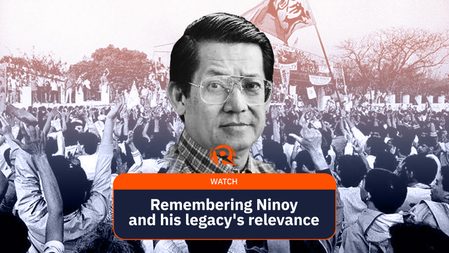
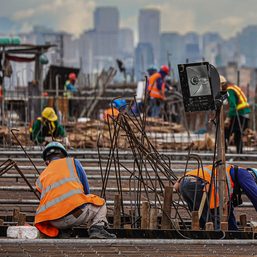

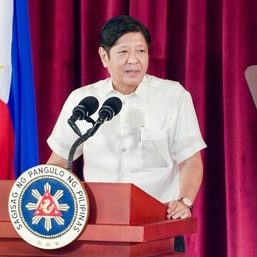
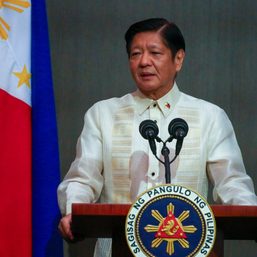
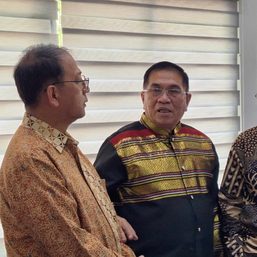

![[In This Economy] Is the Philippines quietly getting richer?](https://www.rappler.com/tachyon/2024/04/20240426-Philippines-quietly-getting-richer.jpg?resize=257%2C257&crop=194px%2C0px%2C720px%2C720px)
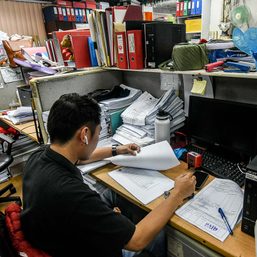
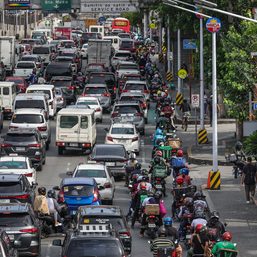
There are no comments yet. Add your comment to start the conversation.